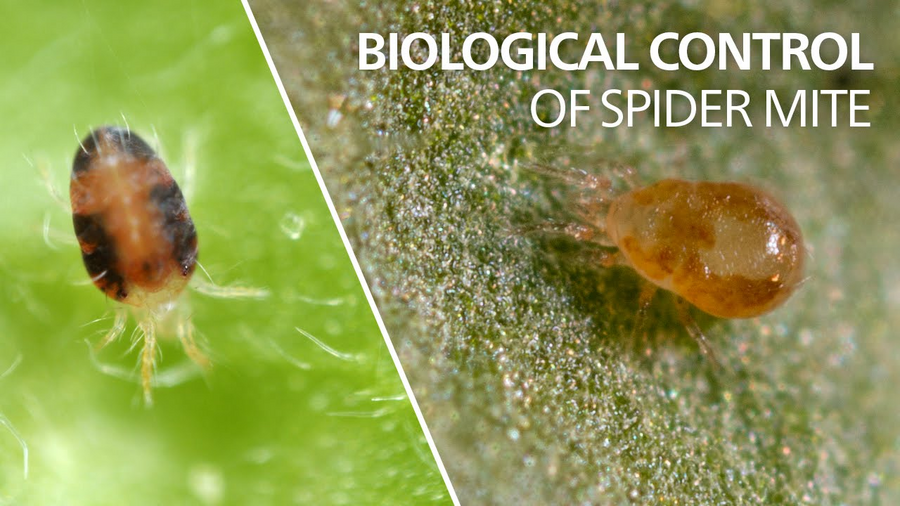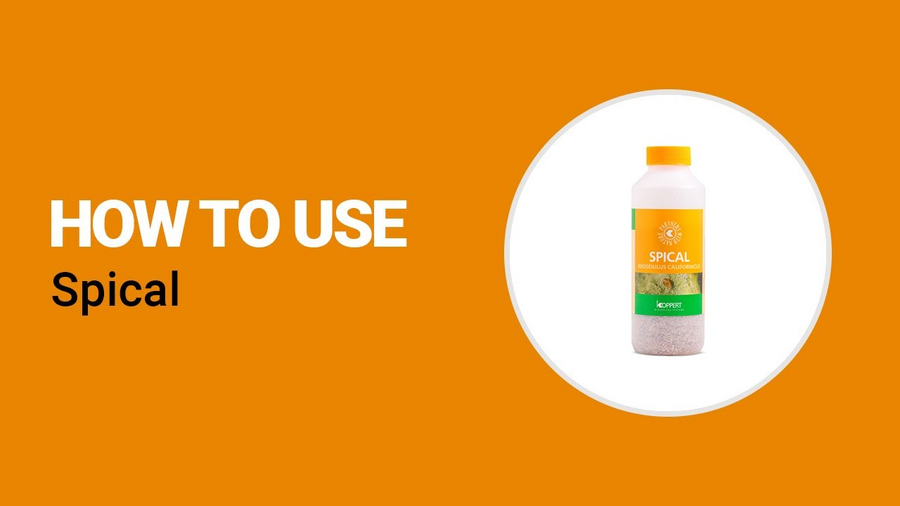The predatory mite Neoseiulus californicus (previously Amblyseius californicus) is commonly used for biological pest control of spider mites. Although Neoseiulus californicus prefers spider mites it can also feed on other food sources such as other mites, thrips or pollen. This predatory mite is more tolerant of higher temperatures, lower humidities and pesticides than Phytoseiulus persimilis. It can survive longer than Phytoseiulus persimilis when spider mites are scarce and can control small spider mite populations more effectively over the longer term.
Neoseiulus californicus for pest control
Neoseiulus californicus is used for the control of the following pests:
Neoseiulus californicus mites actively seek out and prey on various spider mite species including Two-spotted spider mite (Tetranychus urticae). The predatory mite can also feed on other food sources such as other mites, thrips or pollen.
Feeding behaviour of Neoseiulus californicus
Neoseiulus californicus is a selective predator of Tetranychid mites, i.e. it prefers to feed on spider mites but can also feed and survive on other prey, including other mites, thrips or pollen. Predatory mites pierce their prey and suck out the contents. When feeding on Two-spotted spider mite (Tetranychus urticae), Neoseiulus californicus shows a preference for immature stages (eggs, larvae and nymphs) as opposed to adults. However, adult females feed on all stages of Two-spotted spider mite (Tetranychus urticae) whereas the larvae feed mainly on eggs, and the nymphs on eggs, larvae and nymphs.
Just as Phytoseiulus persimilis, Neoseiulus californicus can move easily within spider mite webbing. When spider mites are present it will preferentially feed on them and the population development is much faster on a diet of spider mites than on other food sources. They can also survive longer than Phytoseiulus persimilis in the complete absence of food, remaining in the crop to await the arrival of new prey.
Life cycle of Neoseiulus californicus
The developmental stages are the same as for other members of the Phytoseiidae family: egg, larva, proto- and deutonymph, and adult males and females. Adult mites are lighter and have a flatter more elongated body than Phytoseiulus persimilis. They closely resemble other predatory mites used in biological control such as Neoseiulus cucumeris, Amblyseius swirskii or Amblydromalus limonicus. They are roughly 0.4 mm in length. The eggs are oval, transparent to white in colour and are deposited on the underside of the leaves. They are smaller than those of Phytoseiulus persimilis but similar to eggs of other predatory mites like for instance Amblyseius swirskii or Amblydromalus limonicus. The larvae have three pairs of legs and, unlike the larvae of Phytoseiulus persimilis, feed on spider mite eggs. The nymphs and adults are a transparent white colour. In many cases the colour of the food ingested shines through the skin and shows up as an X-shaped marking on the back. If the food supply has been absent for some time, they become thinner and a uniformly light transparent colour.
Best conditions for use of Neoseiulus californicus
Neoseiulus californicus is most effective at temperatures between 13 and 32°C (55 and 90°F) and is sensitive to relative humidity below 60%.
Neoseiulus californicus in bottles
The predatory mite Neoseiulus californicus is available in a bottle (Spical).
- Turn and shake bottle gently before use
- Push the centre of the cap to open the dosage hole
- Carefully sprinkle material on leaves
- Make sure the material remains on the leaves for at least a few hours after introduction
- Can also be applied with (Mini)-Air(o)bug
The dosage of Spical depends on climate, crop and pest density and should always be adjusted to the particular situation. Start introduction as soon as the first pest mites are detected in the crop. Introduction rates typically range from 25-125 per m2/release. Releases should be repeated at least five times at weekly intervals. Consult a Koppert advisor or a recognized distributor of Koppert products for advice on the best strategy for your situation.
Neoseiulus californicus in sachets
The predatory mite Neoseiulus californicus is also available in breeding sachets (Spical-Plus, Spical Ulti-Mite). In this case the predatory mites multiply in the sachet and disperse into the crop over a period of several weeks.
- Hang sachets in sheltered locations in the crop, avoid hanging into direct sunlight
- Sachets already have an exit hole
- Hold sachets by the cardboard strip at the top, to avoid damaging the predatory mites
The dosage of Spical-Plus and Spical Ulti-Mite depends on climate, crop and pest density and should always be adjusted to the particular situation. Start introduction preventively or as soon as the first spider mites are detected in the crop. Use at least 4,000 sachets per ha and hang them evenly spaced in the crop. Release should be repeated after 4 weeks if the pest is not controlled. Consult a Koppert advisor or a recognized distributor of Koppert products for advice on the best strategy for your situation.


